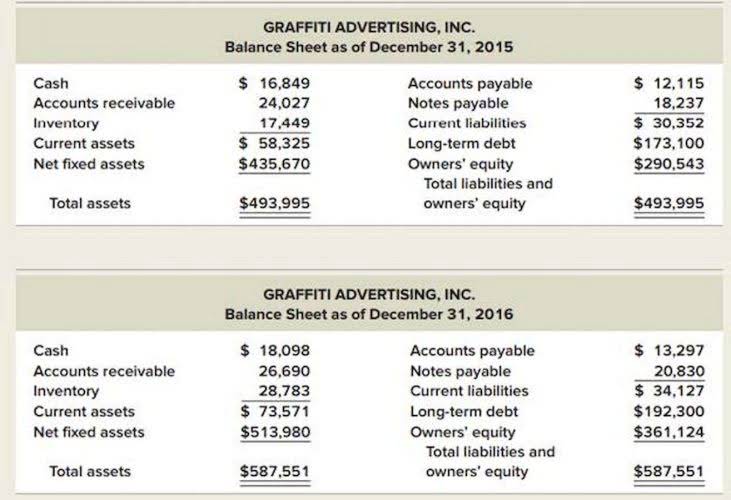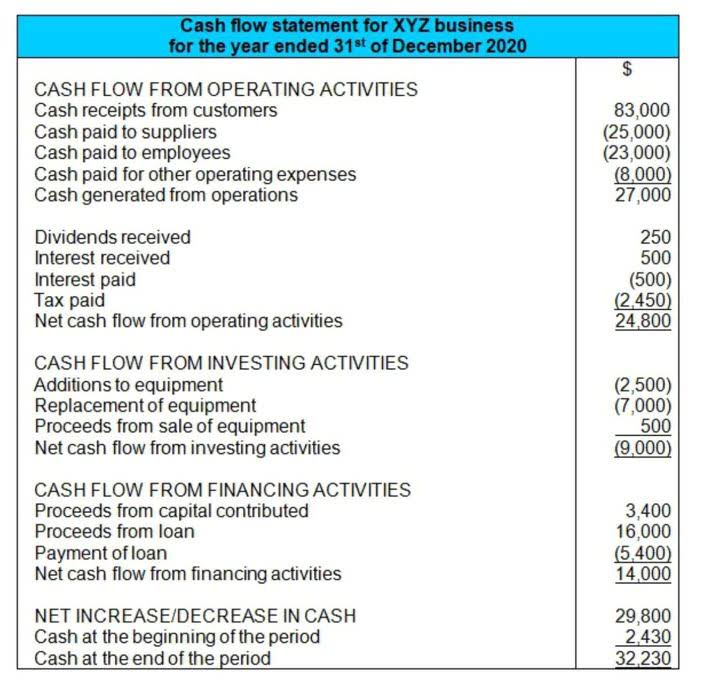Accrued expenses are recorded as credits (liabilities) because they represent costs that are incurred but not yet paid. The corresponding debit goes to the relevant expense account (e.g., Salaries Expense, Rent Expense). Track prepaid expenses, automate accrued entries, and manage deferred revenue, all in one powerful, compliant platform built for Saudi businesses. Understanding deferred costs is essential for accurate financial analysis and strategic planning. It is important to note that deferred financing costs are not limited to initial debt issuance.
Click here to extend your session to continue reading our licensed content, if not, you will be automatically logged off. Get in touch to find out how we can help you with your accounting, tax and financial needs. We are a forum for professional accountants and tax advisers to discuss accountancy and taxation, but we also welcome individuals and business users who have queries relating to these matters. The ASU provides additional guidance on induced conversions and extinguishment accounting. Helping clients meet their business challenges begins with an in-depth understanding of the industries in which they work.
4.3.3 Origination fees/costs related to revolving lines of credit
This concept ensures a true and fair view of a company’s financial position and performance over time. As deferred costs are amortized over time, they transition from the balance sheet to the income statement, impacting net income. This gradual expensing aligns with the matching principle, ensuring that expenses are recognized in the same periods as the revenues they help generate. This alignment provides a clearer picture of a company’s operational efficiency and profitability. For instance, the amortization of a capitalized software development cost will be reflected as an expense in the income statement over several years, smoothing out the impact on net income and avoiding large fluctuations that could mislead stakeholders.
Financing Fees
In those cases, it is important to write off those amounts when a loan pays off or is written off. Also, it is important to stop amortizing those amounts while a loan is on nonaccrual status. Accrued revenue refers to income earned by a company for goods delivered or services rendered, but not yet billed or received in cash at the end of the accounting period. It is recorded as an asset (Accounts Receivable) on the balance sheet and as revenue on the income statement.
- It begins with identifying the appropriate amortization method, which can vary based on the nature of the deferred cost.
- This approach ensures that expenses are matched with the periods in which the related benefits are realized, adhering to the matching principle in accounting.
- The initial step in accounting for deferred costs is identifying which expenses qualify for deferral.
- This April 2025 edition incorporates our latest interpretations based on frequent questions we experience in practice.
- On the other hand, generally accepted accounting principles issued by the FASB indicate that deferred financing costs should be recorded on the balance sheet and amortized over the financing (e.g., loan or bonds) term.
These costs are not immediately expensed but are instead spread out across multiple periods, aligning with the revenue they help generate. This practice can significantly impact a company’s financial health and reporting accuracy. Deferred financing costs are incurred during the debt issuance process and are spread over the life of the debt through amortization.
Different methods can lead to varying tax liabilities, influencing a company’s cash flow and financial planning. For example, accelerated amortization can result in higher expenses in the early years, reducing taxable income and providing immediate tax relief. This strategy can be advantageous for companies looking to reinvest savings into growth initiatives. Deferred loan origination fees and costs should be netted and presented as a component of loans. If the loans are classified as held for sale, the net fees and costs should not be amortized; instead, they should be written off as part of the gain or loss on the sale of the loan. In some cases, the timing of loan originations is such that deferred amounts are not material.
The Financial Accounting Standards Board (FASB) and the International Accounting Standards Board (IASB) have both introduced updates aimed at enhancing transparency and consistency in financial reporting. These changes often require companies to reassess their existing accounting practices and make necessary adjustments to comply with new guidelines. Amortization of deferred costs is a nuanced process that requires careful planning and execution.
2.1A Debt discount and premium—before adoption of ASU 2020-06
They are classified as intangible assets since they do not have a physical form but provide future economic benefits to the company. These costs are typically recorded under the category of “Other Assets” or “Deferred Charges.” Prepaid expenses, accrued expenses, accrued revenue, and deferred revenue are all foundational to the accrual basis of accounting, which aims to match revenues and costs to the periods in which they are earned or incurred, regardless of when cash changes hands. External financing often represents a significant or important part of a company’s capital structure. In this article, we will look at accounting requirements for debt issuance costs under US GAAP and an example of accounting for such costs using the effective interest rate method and the straight-line method.
Calculation and Accounting Treatment
However, it is important to consult with tax professionals or refer to the applicable tax laws to determine the deductibility of deferred financing costs in a specific jurisdiction. As the debt matures or is repaid early, the remaining deferred financing costs are expensed in the income statement. This recognition ensures that the costs are matched with the revenue generated by the debt over its lifespan.
The Board received feedback that having different balance sheet presentation requirements for debt issuance costs and debt discount and premium creates unnecessary complexity. In the evolving landscape of corporate finance, staying informed about deferred financing costs and their implications is crucial for navigating the complex world of debt issuance and capital markets. The array of accounting literature on financial instruments can be bewildering, and the varieties and complexities of modern financial instruments are sometimes staggering. Taken together, it’s not an exaggeration to say that accounting for debt and equity financing transactions can seem daunting.
The accounting requirements are now codified in FASB literature in Topic , Receivables—Nonrefundable Fees and Other Costs. Essentially, the FASB requires that loan origination fees and costs should be deferred and (generally) amortized as a component of interest income over the life of the loan. This article will review what constitutes loan origination fees and costs, how to amortize those amounts and some special circumstances that can arise. Concepts Statement 6 further states that debt issuance costs cannot be an asset because they provide no future economic benefit. When a company borrows money, either through a term loan or a bond, it usually incurs third-party financing fees (called debt issuance costs).
Misstatements in these areas can lead to incorrect financial ratios, misleading interpretation of cash flow, and compliance risks. Assume that a credit facility provides for the extension of multiple, unscheduled drawdowns (or loans) with varying maturities. Also assume that the facility does not have the characteristics of a revolving line of credit (for example, repayments of amounts borrowed are not available for reborrowing) and drawdowns are anticipated. The commitment fee shall be deferred until the facility is exercised and a drawdown is made. The tax deductibility of deferred financing costs depends on the jurisdiction and the specific tax regulations in place. In many cases, these costs can be deducted as business expenses, reducing the company’s taxable income.
- These are fees paid by the borrower to the bankers, lawyers and anyone else involved in arranging the financing.
- Let’s consider a hypothetical scenario to illustrate the application of deferred financing costs.
- These changes often require companies to reassess their existing accounting practices and make necessary adjustments to comply with new guidelines.
- In addition to prepaid and accrued expenses, it’s equally important to understand accrued revenue and deferred revenue, which impact the income side of the equation similarly.
- Ratios such as the current ratio, asset turnover ratio, and return on assets (ROA) can be significantly influenced by the presence of deferred costs.
The accounting standards also address other specific fees such as commitment, credit card and syndication fees. In general, those fees are netted with related direct costs as well, and amortized over the relevant period, such as the commitment period. When a loan is refinanced with the same lender on market terms, the changes in terms are more than minor, and a troubled debt restructuring (TDR) is not involved, then the refinanced loan is considered a new loan. Any deferred fees and costs on the old loan are written off and new deferred fees and costs are deferred and amortized over the term of the new loan, assuming the loan is held for investment. The period used for amortization can be the contractual life of the loan, or an estimated life for a group of similar loans that contemplates anticipated prepayments. Generally, we see financial institutions use their loan system to capture and amortize these net fees and costs over the contractual life.
Since the purchase is not an origination, any internal costs should be expensed as incurred. Deferred loan origination fees are typically thought of as “points” on a loan—fees that reduce the loan’s interest rate-but they can also be amounts to reimburse a lender for origination costs or are fees otherwise related to a specific loan. Accrued expenses appear in the liabilities section of the balance sheet (statement of financial position). They are typically listed under Current Liabilities, as they are expected to be paid within the next accounting period. Deferred costs also impact profitability ratios like the gross margin and operating margin. Amortization of deferred costs can reduce these margins, affecting the perceived profitability of the company.
These costs are initially recorded as assets on the balance sheet and expensed over the period they benefit. For instance, if a company pays an annual insurance premium upfront, the cost is spread over twelve months. This approach ensures that expenses are matched with the periods in which the related benefits are realized, adhering to the matching principle in accounting. Properly managing prepaid expenses is crucial for maintaining accurate financial statements and avoiding the misrepresentation of a company’s financial position. The adoption of CECL has raised fresh questions related to the treatment of deferred fees and costs, particularly regarding the amortized cost basis and the allowance for credit losses estimates. Deferred fees and costs remain on the balance sheet as a component of the amortized cost basis of loans and the related income is recognized over the life of the loan to prevent financial institutions from front-loading income at loan origination.
If the revolving line of credit expires and borrowings are extinguished, the unamortized net fees or costs would be recognized in income upon payment. Understanding deferred financing costs is crucial for businesses and investors alike, as it provides insights into the true cost of borrowing and the financial implications of debt issuance. In this comprehensive guide, we will delve into the intricacies of deferred financing costs, exploring their nature, calculation, accounting treatment, and their impact on a accounting for deferred financing costs company’s financial statements. If the borrower pays all borrowings and cannot reborrow under the contract, any unamortized net fees or costs shall be recognized in income upon payment.
By recognizing these costs as assets and amortizing them over the life of the debt, companies can accurately represent their financial position and performance. Additionally, investors and analysts can assess the true cost of borrowing and make informed investment decisions. While deferred financing costs are non-cash expenses, they indirectly impact the cash flow statement. The amortization of these costs reduces the company’s operating cash flow, as it represents a reduction in the net income used to calculate operating cash flow. From an accounting perspective, deferred financing costs are considered an asset on the balance sheet.









